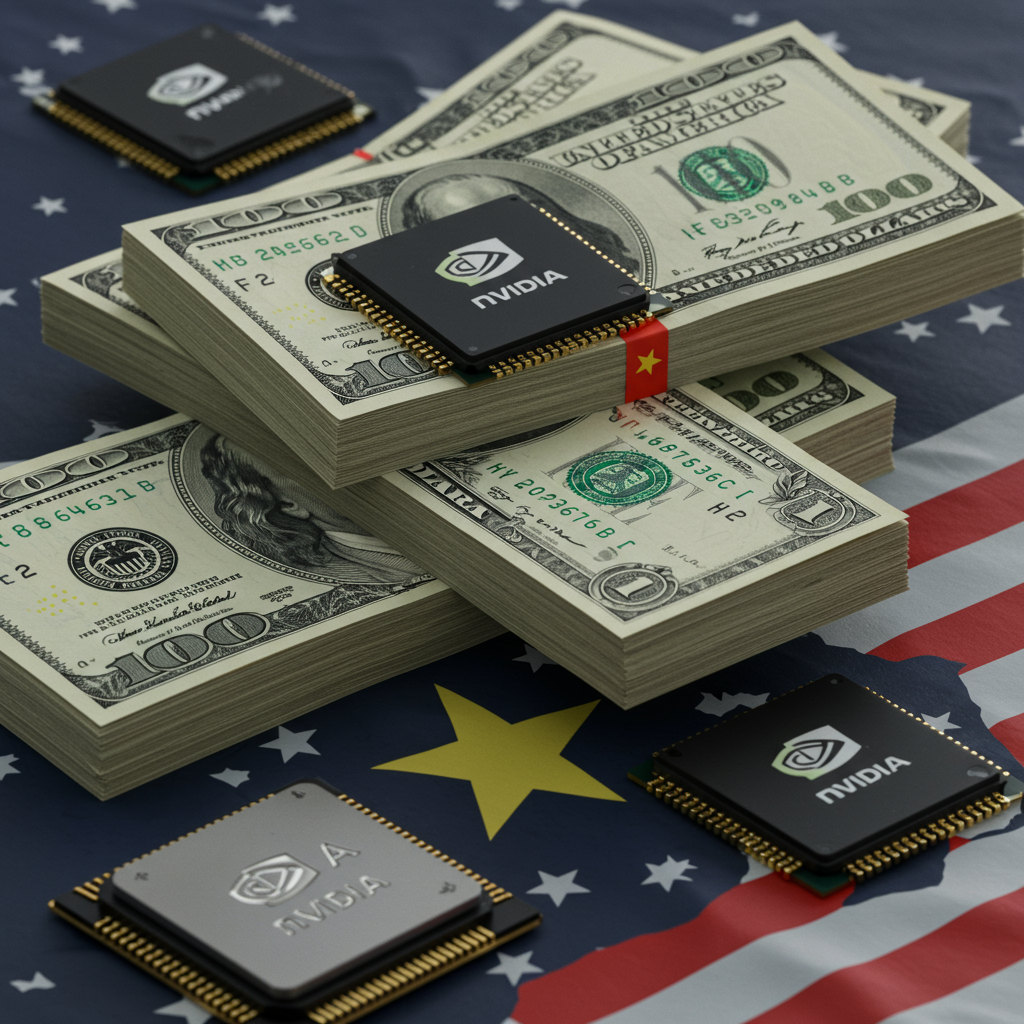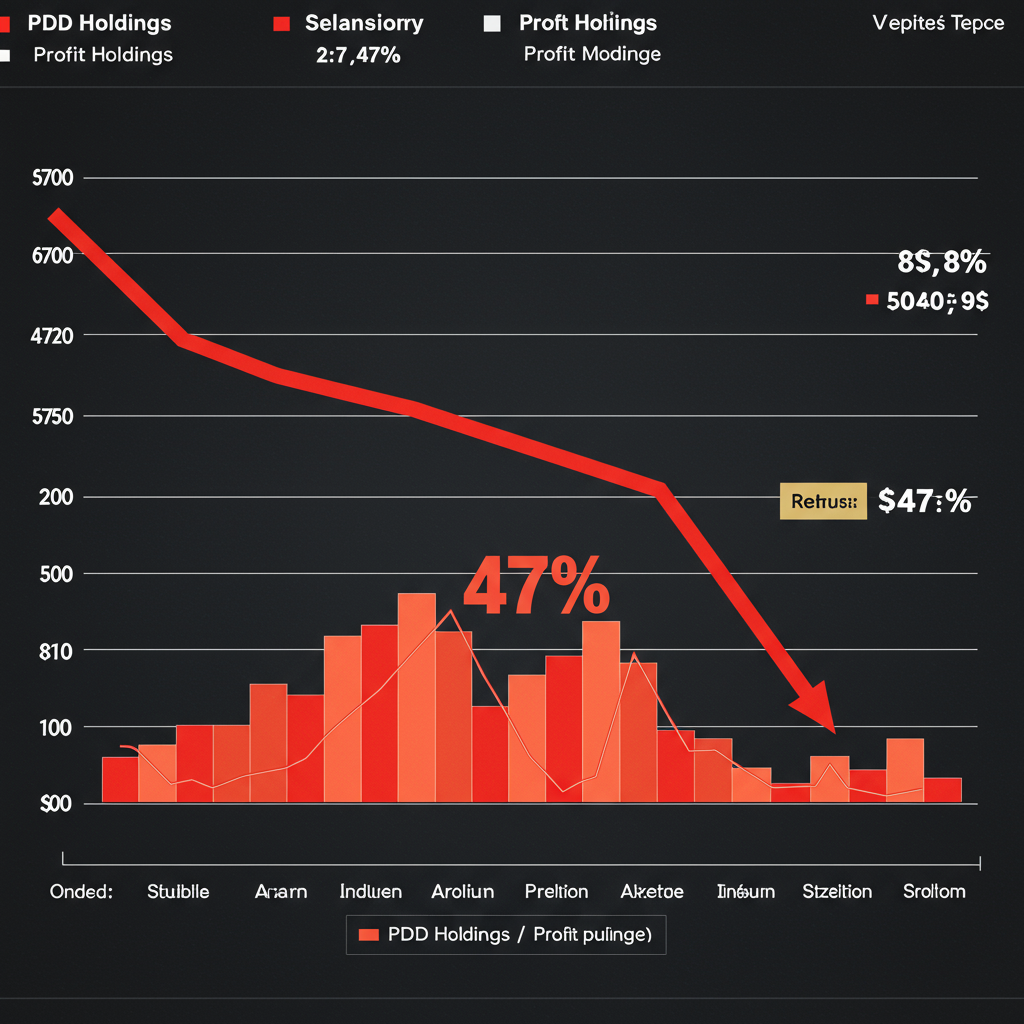A landmark US-China chip deal has reshaped the landscape of global technology trade, forcing leading semiconductor giants Nvidia and AMD to remit 15% of their revenues from China sales directly to the U.S. government. This unprecedented arrangement, aimed at securing export licenses for specific AI chips, highlights the intense geopolitical competition for artificial intelligence dominance. While Washington seeks to maintain its edge, Beijing expresses significant security concerns, potentially complicating the deal’s future success. This development underscores the escalating US-China tech war and its profound impact on global supply chains and innovation.
The Unprecedented Agreement: A New Era for Chip Exports
In a move signaling a significant shift in semiconductor trade policy, Nvidia and AMD have reportedly consented to pay the U.S. government a 15% share of their profits derived from AI chip exports to China. This unique quid pro quo allows these American tech powerhouses to obtain crucial export licenses. Specifically, it permits the sale of Nvidia’s H20 chips and AMD’s MI308 chips within the lucrative Chinese market.
This agreement, brokered under the Trump administration, follows high-level discussions, including a reported meeting between Nvidia CEO Jensen Huang and former President Donald Trump. While the export licenses have been granted, the precise structure of revenue sharing remains subject to clarification. A Nvidia spokesperson confirmed adherence to U.S. government regulations, emphasizing the company’s desire to compete globally, including within China.
Negotiating the Terms: Trump’s Stance
Former President Trump openly described the approved H20 chips as “obsolete.” Despite this assessment, he insisted on a financial concession from Nvidia in exchange for export permission. Initially demanding a 20% cut, negotiations led to the agreed-upon 15% rate. Trump suggested that even more advanced chips, like Nvidia’s cutting-edge Blackwell, could potentially be exported at an even steeper price – perhaps 30% to 50% of revenue – albeit in an “unenhanced” form. This approach reveals a strategy to leverage American technological superiority for direct economic gain.
Nvidia’s Position: Navigating Global Regulations
For Nvidia, this deal represents a complex tightrope walk. The company strives to maintain access to the crucial Chinese market, a significant revenue stream, while complying with stringent U.S. export controls. The H20 chip, though not Nvidia’s most powerful, was specifically designed to meet previous export restrictions imposed by the Biden administration. Nvidia’s willingness to engage in such a revenue-sharing agreement demonstrates the immense pressure on tech firms caught in the crosshairs of superpower rivalry. They seek a balance, hoping regulations allow for continued competition without relinquishing top-tier technology that could pose national security risks.
China’s Counter-Narrative: Security Concerns and Backdoors
Despite the potential for billions in revenue for the U.S. government, the success of this US-China chip deal hinges on China’s willingness to purchase these chips. Chinese state media, particularly outlets linked to state broadcaster CCTV, have voiced significant skepticism. They argue that Nvidia’s H20 chips pose security risks, suggesting potential “backdoors” that could compromise their function and data integrity.
This narrative aligns with Beijing’s broader efforts to reduce its reliance on foreign technology. Commentary from these outlets suggests China “certainly has the option not to buy” chips deemed neither environmentally friendly, advanced, nor safe. Such concerns mirror past U.S. anxieties regarding Chinese tech firms like Huawei, highlighting a reciprocal distrust in the global technology arena.
Nvidia’s Rebuttal: Debunking Security Allegations
Nvidia has consistently and vehemently denied any claims of backdoors, spyware, or “kill switches” embedded in its products. The company released a public statement asserting that such vulnerabilities would be a severe security flaw, beneficial only to hackers and malicious actors. This firm denial seeks to reassure customers globally and counter the politically charged accusations from Beijing, emphasizing the integrity of their AI chip exports.
The Stakes: AI Dominance and Trade Friction
China’s access to advanced American technology, particularly high-end chips crucial for AI development, remains a central point of contention in the escalating US-China tech war. Both nations are locked in a fierce competition for technological supremacy, with AI at its core.
A broader trade truce between the two economic giants, which had previously reduced tariffs, faces an expiration deadline, with talks ongoing for a potential extension. U.S. Treasury officials have previously indicated that Nvidia export controls serve as a “negotiating chip” in these wider trade discussions.
Beyond H20: The Future of Blackwell Chips
The H20 chip, while sophisticated, does not represent Nvidia’s pinnacle of AI processing power. The significantly more advanced Blackwell chip remains largely off-limits for export to China. The Trump administration has maintained this restriction, citing national security concerns related to China’s potential military and AI advancements. However, the possibility of future negotiations for “unenhanced” versions of Blackwell, potentially at even higher revenue-sharing rates, suggests a continuing, complex dialogue. This approach allows the U.S. to maintain a lead in cutting-edge technology while still engaging in lucrative trade.
Beijing’s Self-Sufficiency Push
The recurring imposition of U.S. export controls has spurred China to accelerate its domestic innovation efforts. Chinese leaders are increasingly pushing for technological self-sufficiency, aiming to reduce reliance on American-made chips. Experts suggest that restrictions on chips like the H20 could inadvertently catalyze China’s independent research and development, potentially leading to a more robust domestic semiconductor industry in the long term. This strategic push is a direct response to the perceived vulnerabilities exposed by U.S. trade policies, further intensifying the global tech rivalry.
The Geopolitical Chessboard of Semiconductors
This US-China chip deal is more than just a business transaction; it is a profound illustration of “silicon diplomacy.” It demonstrates how advanced technology, particularly semiconductors, has become a primary tool in geopolitical leverage and economic statecraft. The U.S. aims to curb China’s military and AI ambitions by controlling access to cutting-edge chips, while simultaneously seeking to profit from the demand for less advanced versions. China, in turn, navigates these restrictions by raising security concerns and accelerating its own indigenous chip development. This complex interplay suggests a future of continued friction, innovation, and strategic maneuvering in the global semiconductor trade. The outcome will shape not only corporate balance sheets but also the future balance of global power.
Frequently Asked Questions
What is the 15% revenue sharing deal between US tech giants and the US government for China sales?
This unprecedented agreement requires Nvidia and AMD to pay 15% of their revenues from semiconductor sales in China directly to the U.S. government. In return, these companies receive export licenses for specific AI chips, namely Nvidia’s H20 and AMD’s MI308. This deal was negotiated under the Trump administration as a means to allow American companies to access the Chinese market for certain technologies while extracting a financial benefit for the U.S. government, linking commercial trade directly to geopolitical strategy.
Why are Chinese state media outlets concerned about US-made AI chips like Nvidia’s H20?
Chinese state media, particularly affiliates of CCTV, have raised significant security concerns about U.S.-made AI chips. They allege that chips like Nvidia’s H20 could contain “backdoors” or other vulnerabilities that might impact their function or security, potentially allowing for “tracking and positioning” or “remote shutdown” capabilities. These concerns mirror past U.S. worries about Chinese technology and serve as a strategic counter-narrative, potentially influencing China’s willingness to purchase these chips despite the agreement. Nvidia has publicly denied these accusations.
How do US export controls on AI chips impact the global semiconductor market and technological innovation?
US export controls significantly impact the global semiconductor market by restricting access to advanced technologies for certain countries, primarily China. This can create challenges for U.S. companies by limiting market access and revenue. However, the controls are intended to curb the technological advancement of geopolitical rivals, particularly in sensitive areas like military AI. Indirectly, these controls incentivize countries like China to accelerate their own domestic chip manufacturing and innovation, potentially leading to a more diversified but also more fragmented global semiconductor supply chain in the long run.
Conclusion
The US-China chip deal, mandating a 15% revenue share for U.S. tech giants in exchange for Chinese market access, marks a critical juncture in the global technology landscape. It epitomizes the ongoing strategic competition between Washington and Beijing for AI dominance and technological superiority. While the U.S. seeks to leverage its technological lead for economic and national security gains, China’s skepticism and push for self-reliance signal a complex future. The long-term implications for global trade, AI chip exports, and the semiconductor industry remain uncertain. This situation demands continuous monitoring as both superpowers vie for influence in the critical arena of advanced technology.
Word Count Check: 1045 words



